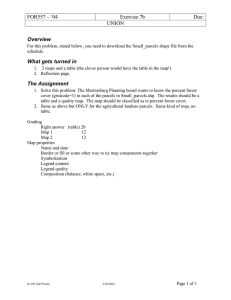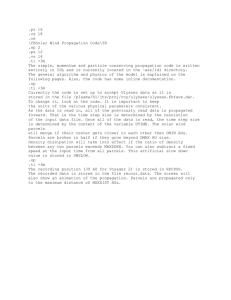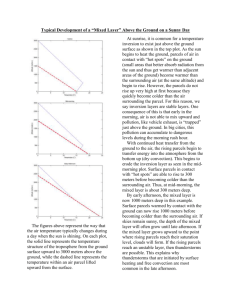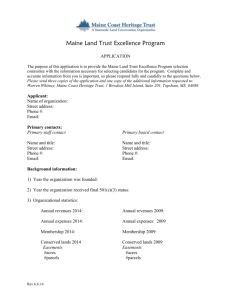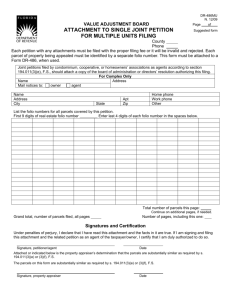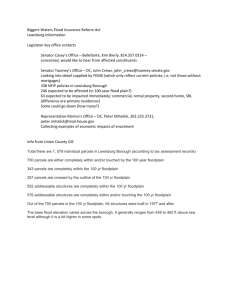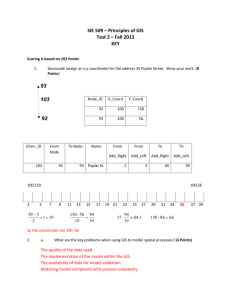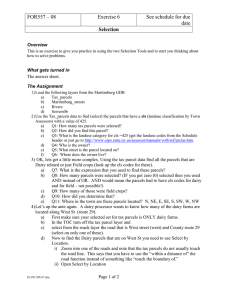Introduction to Physical Oceanography
advertisement
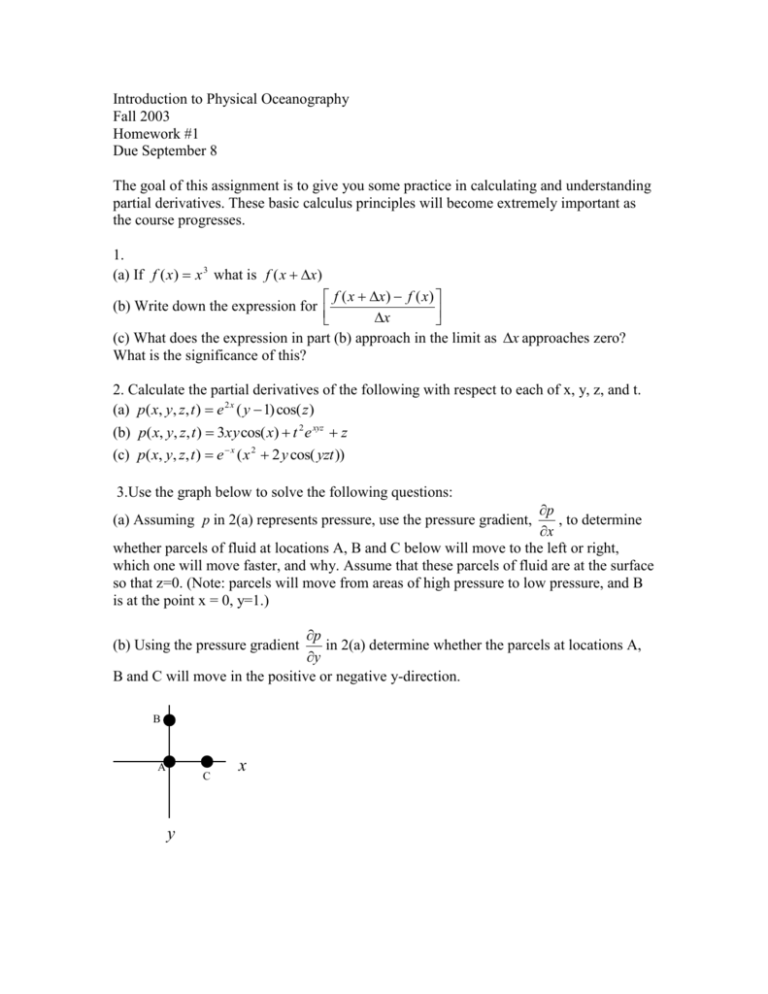
Introduction to Physical Oceanography Fall 2003 Homework #1 Due September 8 The goal of this assignment is to give you some practice in calculating and understanding partial derivatives. These basic calculus principles will become extremely important as the course progresses. 1. (a) If f ( x) x 3 what is f ( x x) f ( x x) f ( x) (b) Write down the expression for x (c) What does the expression in part (b) approach in the limit as x approaches zero? What is the significance of this? 2. Calculate the partial derivatives of the following with respect to each of x, y, z, and t. (a) p( x, y, z, t ) e 2 x ( y 1) cos( z ) (b) p( x, y, z, t ) 3xy cos( x) t 2 e xyz z (c) p( x, y, z, t ) e x ( x 2 2 y cos( yzt )) 3.Use the graph below to solve the following questions: p , to determine x whether parcels of fluid at locations A, B and C below will move to the left or right, which one will move faster, and why. Assume that these parcels of fluid are at the surface so that z=0. (Note: parcels will move from areas of high pressure to low pressure, and B is at the point x = 0, y=1.) (a) Assuming p in 2(a) represents pressure, use the pressure gradient, p in 2(a) determine whether the parcels at locations A, y B and C will move in the positive or negative y-direction. (b) Using the pressure gradient B A C y x
